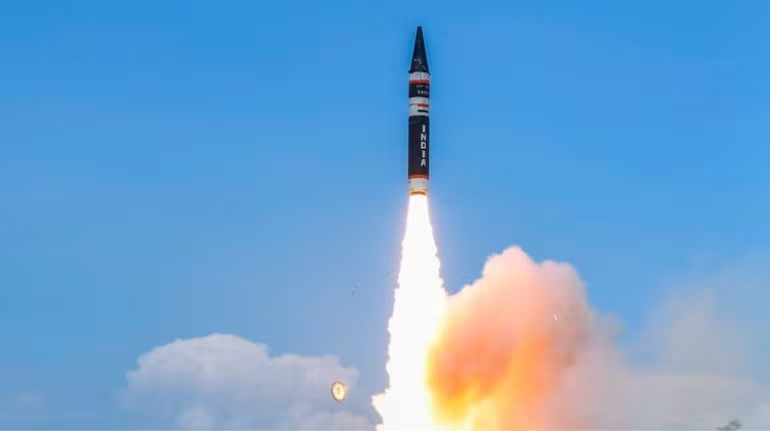
New Delhi
Pakistani leaders are never tired of speaking about the binary of "mommin and kafir (Believer and non-believer" and "Muslims and Hindus" and don't even care to know how India has evolved as a modern and vibrant democracy. To them, there is a reminder - the missiles which destroyed the bases of terrorists and Pakistani military during Operation Sindoor – are products of the vision of an Indian Muslim - Dr APJ Abdul Kalam.
Kalam, the most loved President of India, laid the foundation of what is today one of the most prized and advanced missile systems of the world.
No wonder Dr. APJ Abdul Kalam earned the sobriquet of "Father of Indian Missile Technology" and "Missile Man of India."
Fired by the thought that only a strong country can maintain peace and earn the respect and attention of the world, Dr APJ Abdul Kalam laid the foundation of the Integrated Guided Missile Development Programme (IGMDP) by the DRDO in 1982 in the Dfence Research and Development Organisation (DRDO).
It was under his leadership that India developed several key missiles namely Agni, Prithvi, Akash, and Trishul.
Of these, Agni is an intermediate-range ballistic missile; Prithvi, a tactical surface-to-surface missile (useful for battlefields); Akash, a medium-range surface-to-air missile (which was used in deflecting Pakistani drones and 2 Fateh Missiles during operation Sindoor); Trishul: a short-range surface-to-air missile and, Nag, an anti-tank missile.
 BrahMos Missile sustem on display for public During the Republic day Parade
BrahMos Missile sustem on display for public During the Republic day Parade
Dr. APJ Abdul Kalam’s dream has since flowered into BrahMos - the world's fastest missiles developed jointly by India and Russia. Officials are yet to confirm the use of BrahMos missiles on Pakistani Military bases, but the word is already out, and at least 49 countries are said to have shown interest in the world’s fastest Ballistic missile.
The reality of India's missiles becoming a nightmare for Pakistan can be gauged from a social media post during Operation Sindoor in which a Pakistani reporter is asking his Defence Minister Khwaja Asif why Military did not down the Indian missiles (which attacked nine terrorist recruiting and training centers in Punjab and Pojk).
The minister said, "Indian seems to have developed something with high speed that is hard to detect. Even before we spotted these things, they hit the target. We have no technology to counter them."
It was Dr Kalam who initiated the move for India to own the indigenously developed supersonic cruise missile system, BrahMos, which also reportedly played a key role in the attacks on military bases inside Pakistan between May 7 and 10.
At the Powering India Summit, former Director General of the Defence Research and Development Organisation (DRDO) SK Mishra said that the story of Brahmos began with the visit of former Indian President Dr. APJ Abdul Kalam to Russia in 1993.
The story of Brahmos begins in 1993 when Dr. Abdul Kalam, then the head of the Defence Research and Development Organisation (DRDO), visited Russia. During this visit, he was shown an unfinished supersonic combustion engine, which could not be completed due to lack of financial resources after the collapse of the Soviet Union. Kalam decided to fulfill this dream.

Agni Prime being test fired
On 12 February 1998, Dr Kalam and Russian Deputy Defence Minister N.V. Mikhailov signed an intergovernmental agreement under which the "BrahMos Aerospace" was established. It was a joint venture between DRDO and the Russian NPOM (Russia’s equivalent of DRDO), with India holding 50.5% and Russia 49.5%.
The Joint venture sought to develop, manufacture, design, and market the world's only supersonic cruise missile system — BrahMos.
BrahMos was successfully tested on 12 June 2001 from the Chandipur range in Odisha. At that time, Kalam had superannuated and was the scientific advisor to the government with the rank of cabinet minister. Nevertheless, he was happy to see his babyt had come of age.
It was a historic day for India, as it demonstrated the world's only operational supersonic cruise missile technology. Brahmos Aerospace subsequently gained prominence at domestic and international defence exhibitions, including the MAKS-1 exhibition held in Moscow in 2001. After several successful test launches, the Brahmos missile system was inducted into the Indian Army, Navy, and Air Force. The Brahmos missile flies at a speed almost three times faster than the speed of sound.
SK Mishra explained that the development of Brahmos used indigenous technology acquired under India's Integrated Guided Missile Development Programme (IGMDP), which was launched in 1983 to In 2022, India signed a $375 million deal with the Philippines to supply BrahMos weapons. In 2024, India delivered BrahMos missiles to the Philippines, marking India's first export of the supersonic missile system.
The second batch was delivered to the Philippines in April 2025.
According to sources after India’s precision strikes during Operation Sindoor reportedly with the BrahMos supersonic missile has since now caught global attention. Nations across Asia, the Middle East, and Latin America are showing strong interest in buying the powerful missile.
Countries like Egypt, UAE, Saudi Arabia, Qatar, Oman and Chile, Brazil, Argentina, Venezuela have shown interest in coastal and naval variants of BrahMos. Some negotiations are already in advanced stages.
ALSO READ: Why Pakistan ups its ante against India after each IMF loan
According to BrahMos Aerospace, several other countries, including Argentina, have also shown interest in purchasing the missile system. According to Mishra, buyers (other countries) usually compare different missile systems while placing orders, but we are proud that BrahMos has emerged as the best system in this comparison. This is proof that India has become a defense arms exporter.
